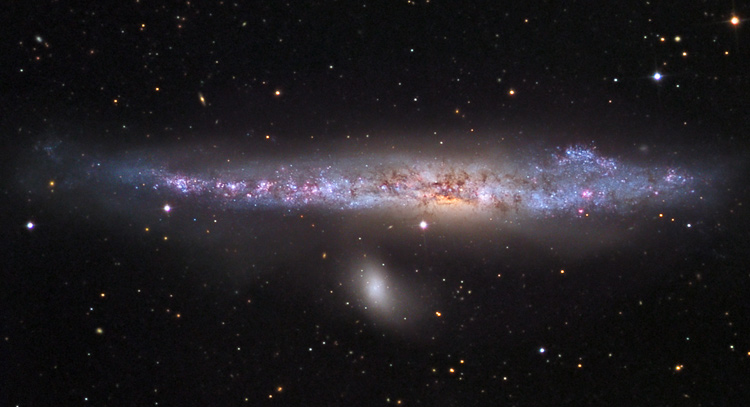NASA | GSFC | STScI | HubbleSite | 2017 Jul 06
[c][attachment=0]hubblestscihp1727af.jpg[/attachment][/c][hr][/hr]When it comes to the distant universe, even the keen vision of NASA’s Hubble Space Telescope can only go so far. Teasing out finer details requires clever thinking and a little help from a cosmic alignment with a gravitational lens.
By applying a new computational analysis to a galaxy magnified by a gravitational lens, astronomers have obtained images 10 times sharper than what Hubble could achieve on its own. The results show an edge-on disk galaxy studded with brilliant patches of newly formed stars.
“When we saw the reconstructed image we said, ‘Wow, it looks like fireworks are going off everywhere,’” said astronomer Jane Rigby of NASA’s Goddard Space Flight Center in Greenbelt, Maryland.
The galaxy in question is so far away that we see it as it appeared 11 billion years ago, only 2.7 billion years after the big bang. It is one of more than 70 strongly lensed galaxies studied by the Hubble Space Telescope, following up targets selected by the Sloan Giant Arcs Survey, which discovered hundreds of strongly lensed galaxies by searching Sloan Digital Sky Survey imaging data covering one-fourth of the sky. ...
Star Formation at z=2.481 in the Lensed Galaxy SDSS J1110+6459:
Star Formation down to 30 parsec scales - Traci L. Johnson et al
- Astrophysical Journal Letters 843(2):L21 (2017 Jul 10) DOI: 10.3847/2041-8213/aa7516
arXiv.org > astro-ph > arXiv:1707.00706 > 03 Jul 2017
I. Lens Modeling and Source Reconstruction - Traci L. Johnson et al
- Astrophysical Journal 843(2):L21 (2017 Jul 10) DOI: 10.3847/1538-4357/aa7756
arXiv.org > astro-ph > arXiv:1707.00707 > 03 Jul 2017
II: What is missed at the normal resolution of the Hubble Space Telescope? - J. R. Rigby et al
- Astrophysical Journal 843(2):79 (2017 Jul 10) DOI: 10.3847/1538-4357/aa775e
arXiv.org > astro-ph > arXiv:1707.00704 > 03 Jul 2017

